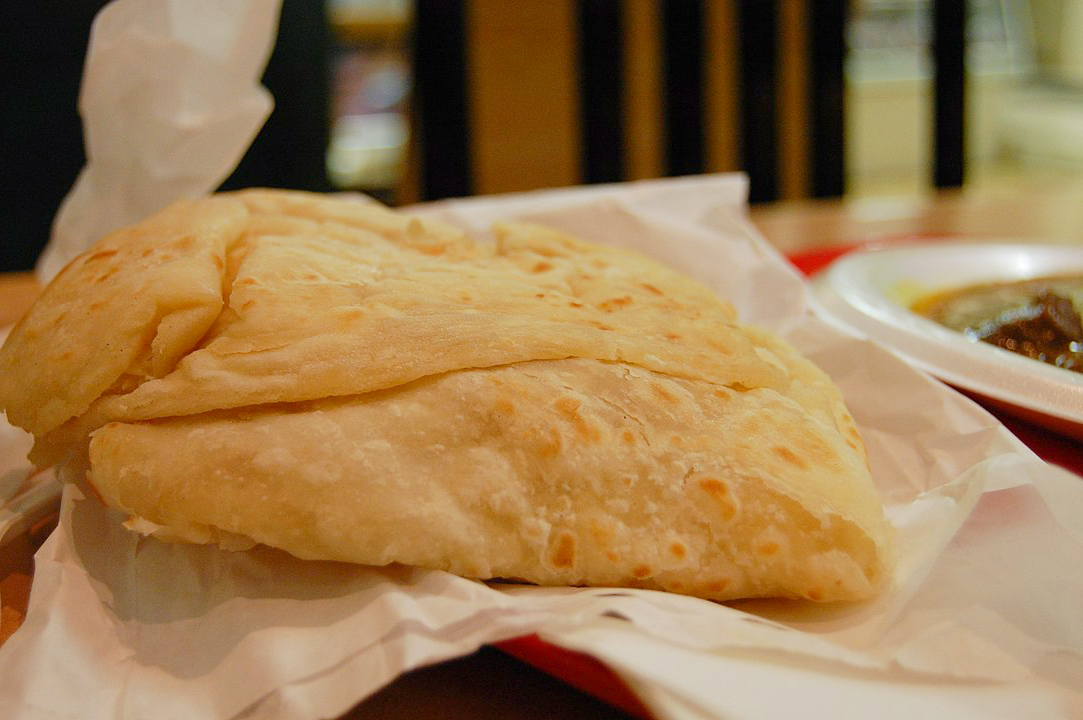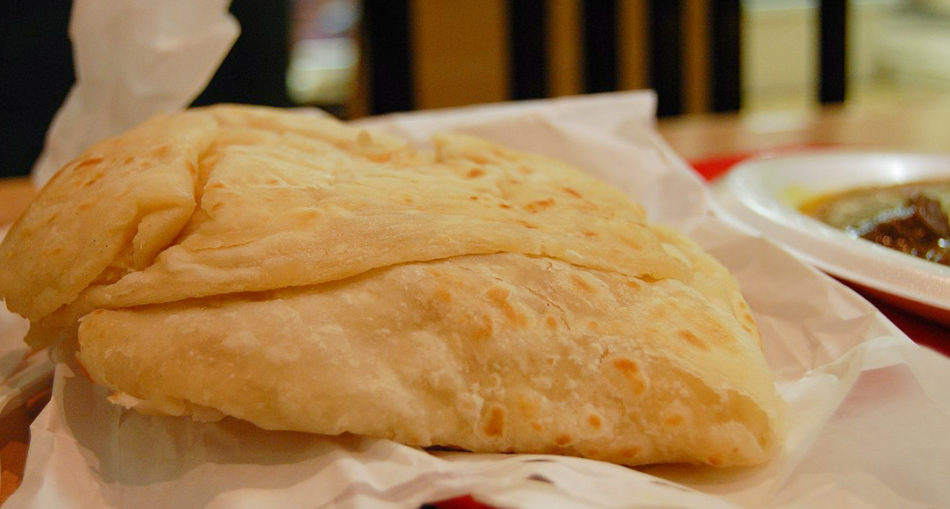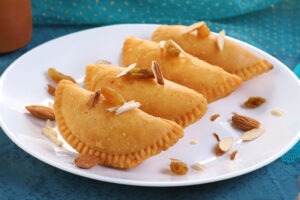Have you ever came home from a hard day’s work and was greeted by some soft, hot, flaky oil roti? That is definitely the best feeling ever. Here in Guyana, oil or paratha roti is a staple in many homes. Guyanese love their roti, especially when it is eaten with the famous and delicious baigan choka. Even though roti is made throughout Guyana, it is not an easy skill to master, as a matter of fact, a lot of people do not know how to properly make roti. So, this article will show where roti originated from and how to make it perfect.

Paratha Roti -Photo By stu spivack – https://www.flickr.com/photos/stuart_spivack/3153970456/sizes/l/, CC BY-SA 2.0, https://commons.wikimedia.org/w/index.php?curid=6930931
Origin Of Roti
Roti is a staple bread in many Caribbean countries, particularly those where there is a large number of persons of Indian descent. These countries include Grenada, Trinidad and Tobago Guyana, Suriname, and Jamaica. Roti was originally brought to the Caribbean (which includes Guyana) by indentured labourers who came from the Indian subcontinent. Roti is generally served with curries and stews. Traditionally, it is easy to eat roti; you just break pieces and sop the curries and meat and eat.
Meaning Of Paratha
A paratha (parāṇṭhā) is a flatbread that originated in the Indian subcontinent. Paratha is a combination of two words “part” and “atta”, which literally means layers of cooked dough. There are many variations of paratha, these include parantha, parauntha, prontha, parontay, porota, palate, porotha, forota,andeven farata.
How To Make Oil/Paratha Roti In Guyana
Oil Roti
Ingredients:
- 2 cup all-purpose flour
- 1/4 tsp. Baking powder
- flour for dusting
- vegetable oil
Method:
- In a large bowl, mix flour, and baking powder.
- Add water slowly and knead into a dough.
- Allow to rise for 10 minutes.
- Dust the flat, cooking surface with flour to avoid sticking.
- Break dough into five pieces.
- Flatten to a neat circle with a rolling pin.
- Brush oil onto the roti and sprinkle with flour.
- From the middle of the roti, make a straight, downwards cut.
- Take one end that you just cut and roll all the way until it reaches the other end.
- Tuck the ends and dust in flour. Repeat steps for remaining dough.
- When done, set aside for 10-15 minutes.
- Heat flat bottomed skillet or tawa.
- Lightly dust the flat surface again if necessary.
- Roll roti with a rolling pin.
- Put roti on skillet or tawa to cook, then brush with oil and flip.
- Brush with oil once more and allow to cook. Both sides must be cooked.
- When roti has brown spots, remove from heat.
- Put the roti in a towel and clap until it becomes loose. Alternatively, you can put it in a mug and shake.
- Repeat steps until you have made all five rotis.
Clapping The Roti: This is the Guyanese way of removing air pockets, for a soft, flaking roti.
Did You Know?
- To reheat parathas in a microwave, simply wrap with a wet paper towel for a soft, roti.
Watch This: How to make Paratha Roti
Oil/Paratha Roti In Guyana
Yes, Guyanese love to eat their oil roti, whether it is early in the morning before they go to work or late in the evenings after work. Some persons have to get their roti every day to make their meal complete. Most of the women, and some men, in Guyana have mastered the skill of making a perfect, flaky oil roti. The texture is sometimes so soft and mellow that you can eat it was just a dab of butter. However, if you still find it hard to make roti, use the above recipe and practice – practice makes perfect. You can eat roti with stews, curries and cooked vegetables. Also, you can buy roti at local roti shops, in the market and at Roti Hut in Georgetown. Enjoy your soft, flaky, perfect roti that is cooked in Guyana!
Article References:
- https://en.wikipedia.org/wiki/Roti
- https://en.wikipedia.org/wiki/Paratha
- https://www.realniceguyana.com/recipes/oil-roti-paratha-roti/
Last Updated: 2020-07-24







